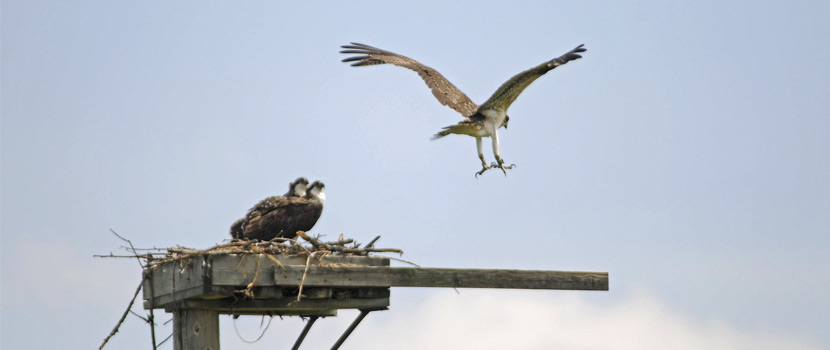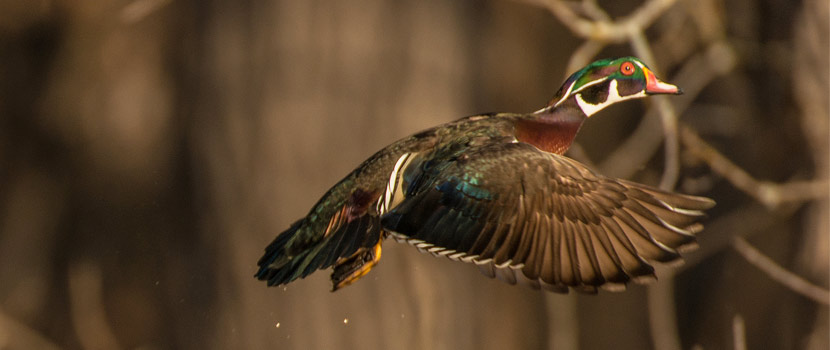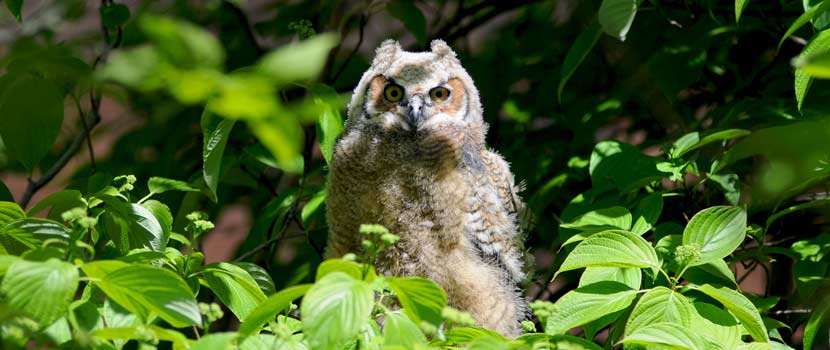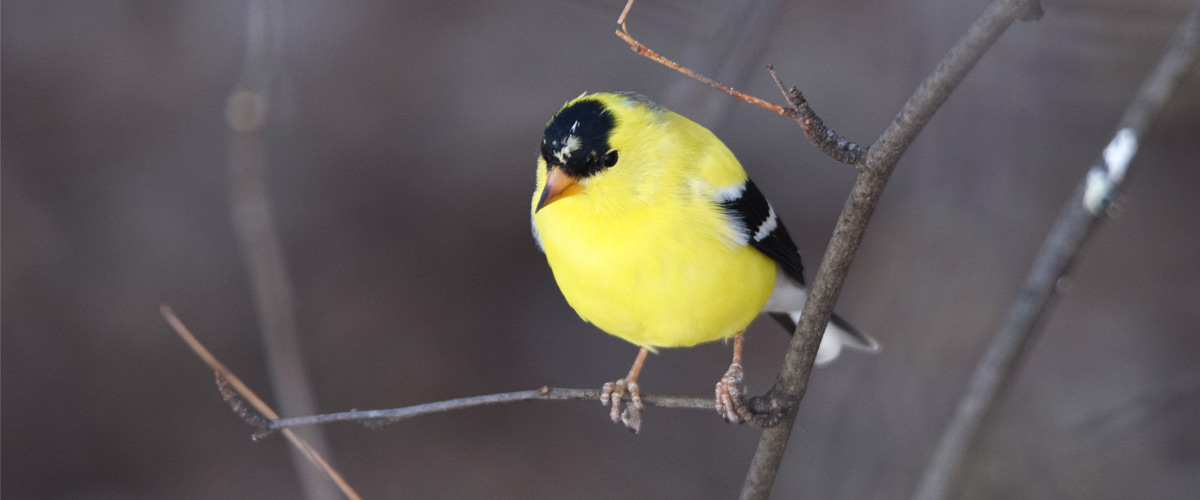
It had been weeks since I’d seen a bird at any of my four feeders, and I was starting to get worried.
I searched the Internet and asked naturalist colleagues what might have happened. There may be predators in the area, some thought. Come to think of it, I had seen Cooper’s hawks nearby before.
One search suggested that a neighbor might have better seed than I was offering. I added a heated bird bath to my yard.
Still nothing.
The following Saturday morning, I opened the blinds to the windows overlooking my feeders, hoping to see some visitors, but no one was there. As I poured my coffee, however, something outside caught my eye.
A chickadee! There was a chickadee at my feeder! Two! I felt relief and excitement to see a couple of my feathered friends back in my yard.
Now, I wondered, will the others return, too?
WORRYING FOR THE BIRDS
This is where I’ve found myself after a few years of birdwatching and maintaining feeders at home.
I worry about the birds, and I’m excited when I see them. I pace in front of the windows hoping and waiting for them to stop by. I keep a camera on my kitchen table for quick access.
Keeping bird feeders is a remarkably rewarding hobby. It injects purpose, curiosity and entertainment into my day-to-day life.
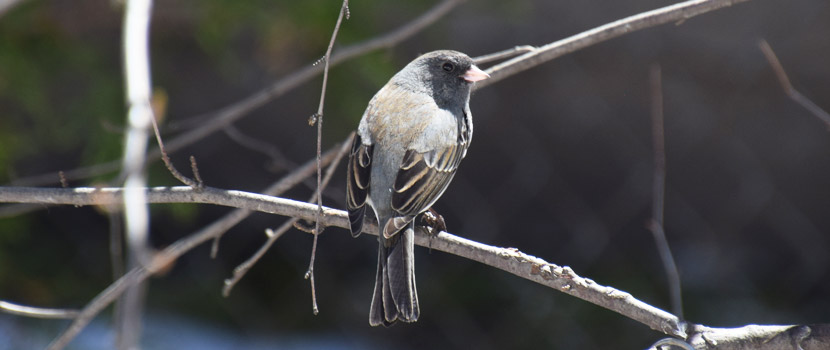
Some days I feel like a mother making sure her children are safe and well-fed. Other times I feel like a scientist while observing the behaviors of these small creatures and recording data for Project FeederWatch and iNaturalist. Other days, I’m a nature photographer, firing off frames with the hope of having a few crisp images.
And still, I’m mostly just excited to see who decides to show up on any given day.
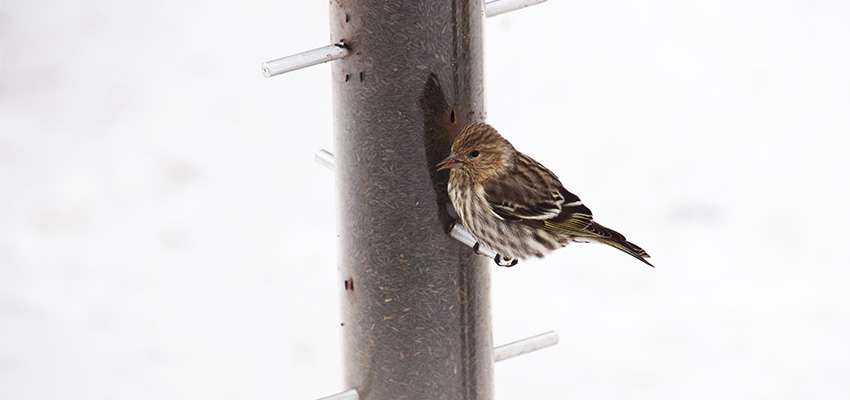
WHY KEEP BIRD FEEDERS?
Feeders give our year-round friends like chickadees, nuthatches and cardinals extra help, especially in the depths of winter when bugs and other naturally occurring food can be hard to come by. They can also be welcome respites for long-distance travelers in the midst of migration.
Naturally, many birds feed on fruits and seeds during the winter. While feeders are not essential for their survival (birds have been surviving in Minnesota for thousands of years without our help), they provide supplemental sustenance and make it easier to observe bird behavior.
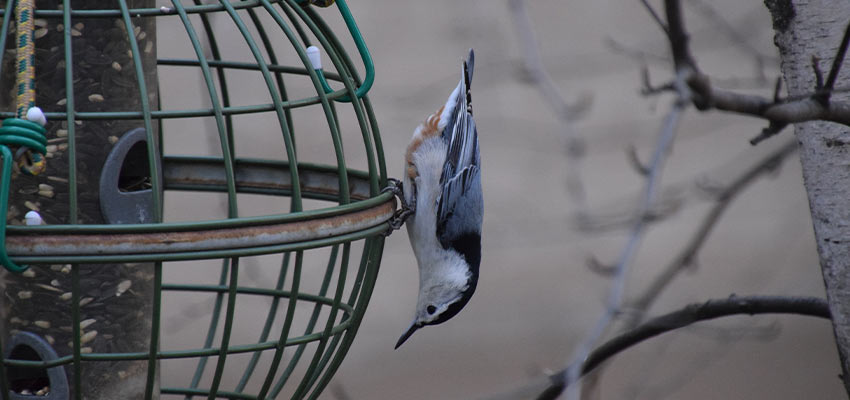
WHAT BIRD FOOD SHOULD YOU USE?
I keep four mixes of seed at my feeder station. Most of it is based on what the folks at the birding stores recommend. Currently, I have the following:
- A mix of black-oil sunflower seeds, striped sunflower seeds and safflower seeds
- A mix of cracked corn, black-oil sunflower seeds, safflower seeds and millet
- A suet block laced with cayenne pepper to keep the squirrels away
- Thistle seed
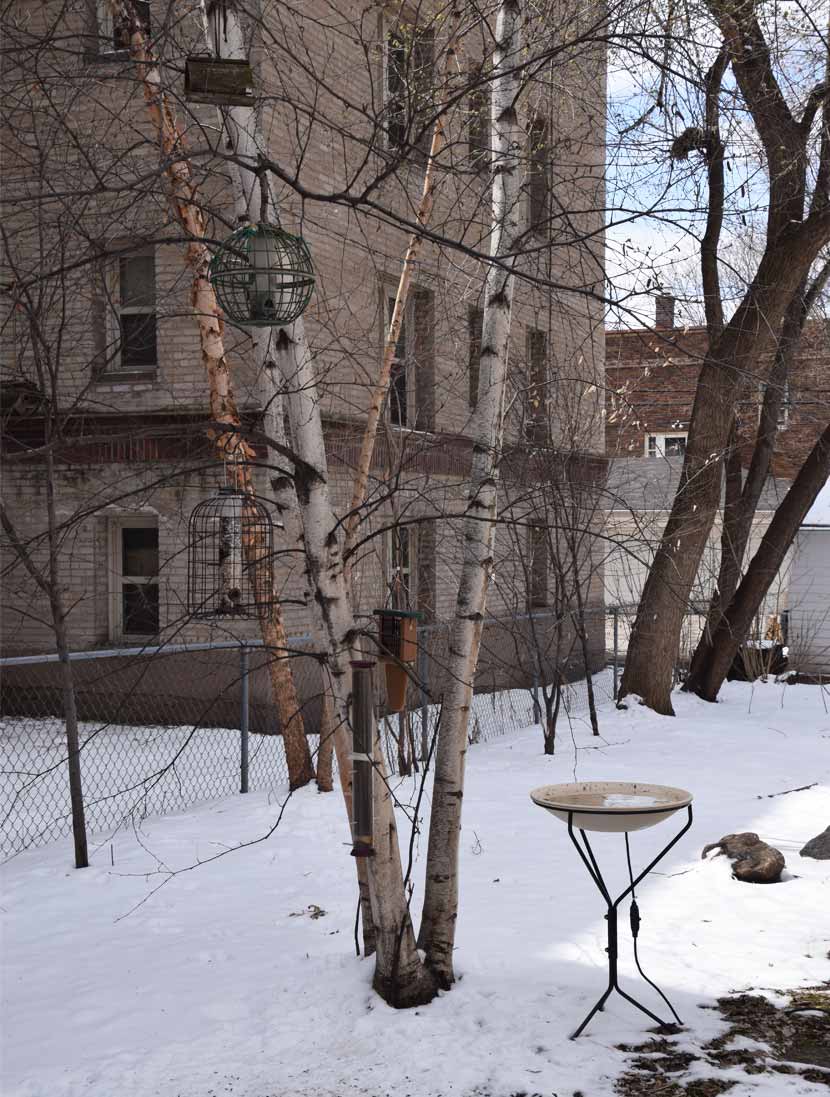
The preferred mix of my feeder friends seems to be whichever is heaviest on black-oil sunflower seeds. I find myself replenishing that one most frequently. The suet is a favorite of the woodpeckers, but the nuthatches and chickadees like it, too. Finches like the thistle, but I didn’t see many of them this winter.
There are plenty of other options depending on what species you’re interested in attracting.
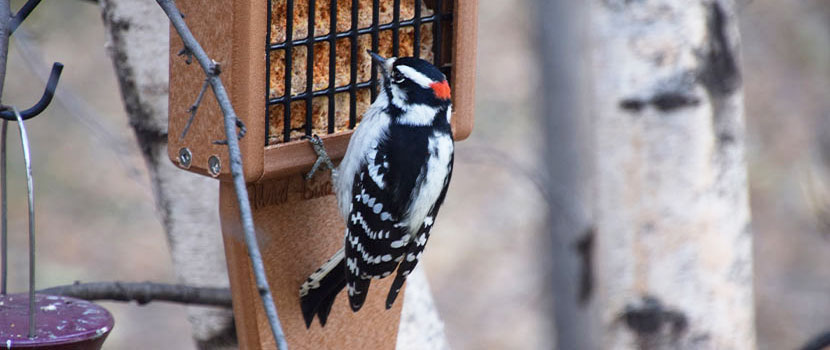
LEARNING ABOUT BIRDS
Feeder watching has also taught me an immense amount about the birds I share my yard with. Even without doing any research, there’s much to be learned by simply paying attention.
Chickadees, for example, like to take their food to go – quickly grabbing seeds from a feeder and flying up to higher branches where they use their whole bodies to hammer them open and eat them. They are also relatively comfortable around humans; I can open a window just a few feet away to take a picture and they don’t mind.
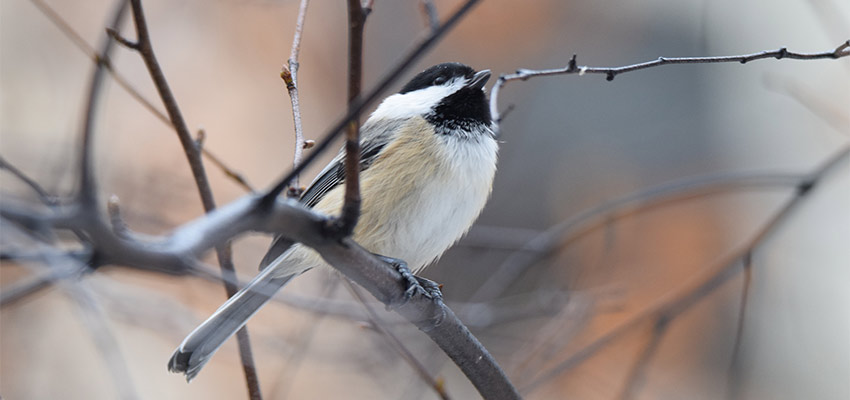
On the other hand, the house finches and goldfinches sit quietly but nervously on the feeder perches as they eat, their eyes seemingly peeled for any looming threats. If I walk too quickly past the window or accidentally tap the glass, they scatter.
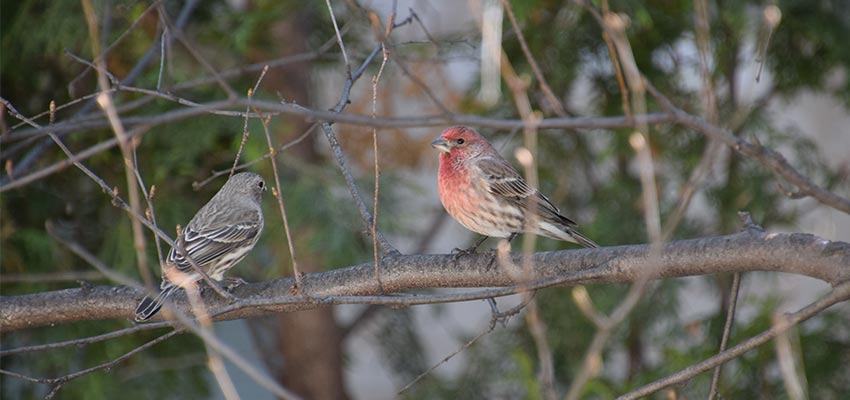
The northern cardinals prefer to eat on the ground, letting out punchy “CHIRPS!” as they do.
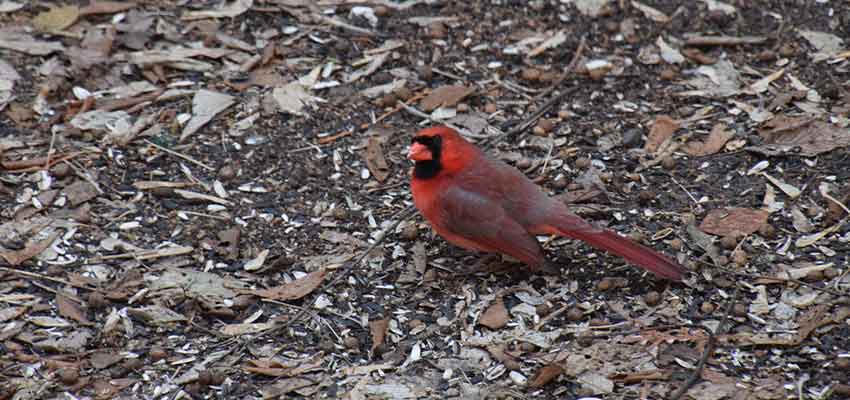
The house sparrows can be real bullies, swarming the feeders like little gluttons and boxing out any others that try to grab a bite. According to The Genius of Birds, they’re the most widely dispersed bird on the planet, which says quite a bit about their resourcefulness and adaptability. However, they are not native to Minnesota and are considered an invasive species that competes with native cavity-nesting birds like chickadees and bluebirds.
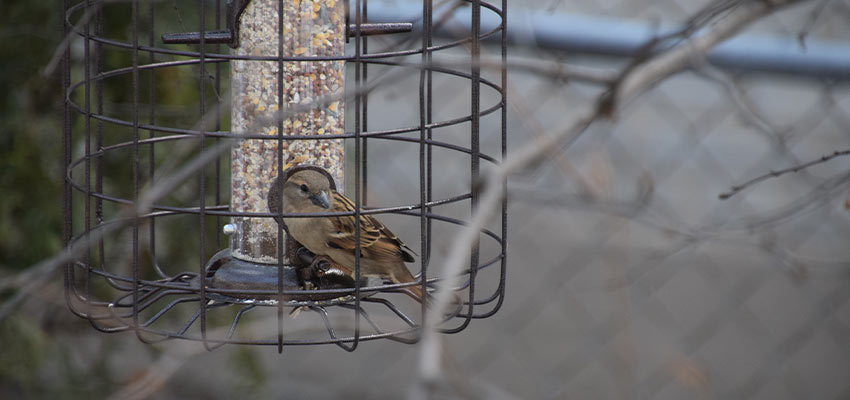
Keeping a feeder can also give you a better chance of seeing migrators who are simply stopping on their way through.
Last year, a group of 10 common redpolls suddenly appeared during a snowstorm. They’re beautiful little puffballs of snow-white feathers with black specks and a distinct red splotch on their heads. They fed for a few hours and were gone. I had never seen them before and haven’t seen them since.
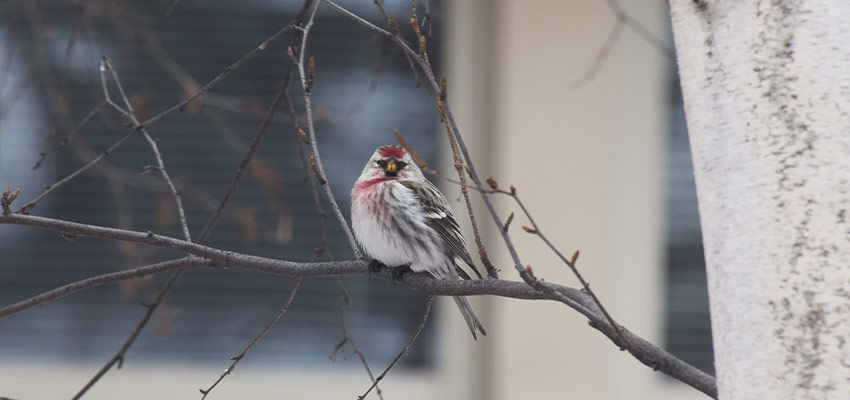
CONNECTING TO NATURE AT HOME
Keeping bird feeders is a rewarding experience. To get started, FeederWatch.org has great information, including types of feeders and feed as well as suggestions for protecting against critters like squirrels.
In the weeks following the return of the chickadees, others started to come back, too. A pair of house finches, a few nuthatches, a sparrow.
As I write this, I can hear the cardinals singing their spring song. I hope they stop by soon, too.
About the Author

Erin Korsmo is the Web Coordinator at Three Rivers Park District. Her background is in journalism and content strategy. Erin has a longstanding passion for the outdoors. As a child, she went camping every summer and volunteered to count loons for the DNR with her family. Erin is a Minnesota Master Naturalist in the deciduous forest and prairie biomes. Outside of work, she enjoys hiking, kayaking, identifying and photographing plants and wildlife, crafting, and spending time with her husband and cat.
Related Blog Posts
Osprey Reintroduction: The Great Success Story
By: Steven Hogg
Ospreys used to be very common in southern Minnesota, but they disappeared from the Twin Cities after World World II. Learn about the program to bring these amazing birds back and how wildlife can survive in an urban area when given the right tools for success.
Believe it or not, fall bird migration is already starting! From ospreys to owls to waterfowl, read all about what birds pass through our area of Minnesota and where in Three Rivers you can expect to see them.
Owls of Three Rivers
By: John Moriarty
There are 10 species of owls that have been found in Three Rivers Park District. Discover which owl is most commonly seen or heard in the parks and learn more about its habits and lifestyle.
